Spanish Armada Ghost Ships
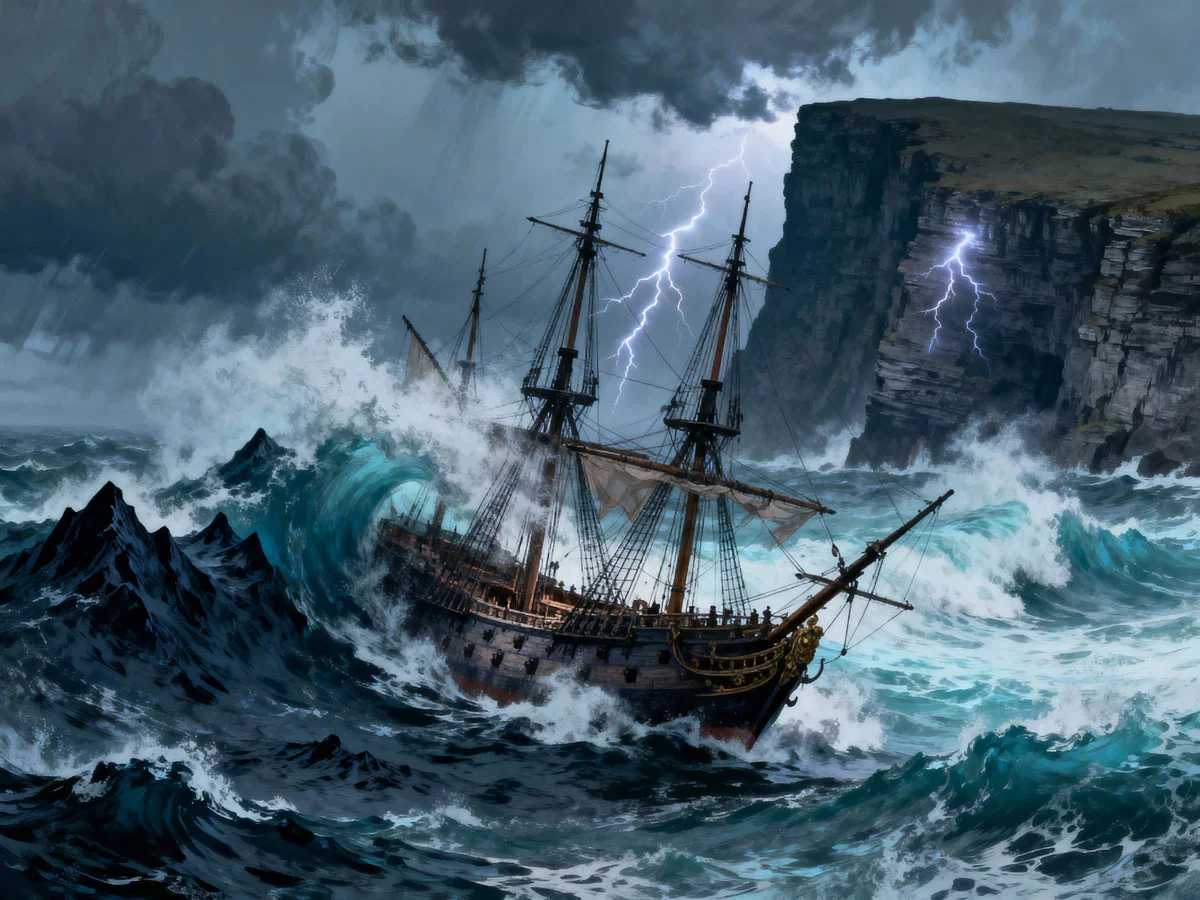
The Story: The Drowned Fleet
The story begins not with a ghost, but with a terrible reality. The year is 1588. Spain’s “Invincible Armada,” the greatest fleet ever assembled, has been defeated and scattered in the English Channel, broken not just by English cannons but by a ferocious “Protestant Wind.” The surviving ships, crippled and desperate, have only one way home: a terrifying, roundabout voyage north of Scotland and down the wild, uncharted west coast of Ireland.
For the starving, scurvy-ridden Spanish sailors, the coast of Clare was a nightmare. The Cliffs of Moher, a majestic sight to a tourist, were a colossal wall of death to a ship that had lost its anchor. The waters off Liscannor Bay were a maze of hidden reefs. In late September of 1588, a vicious autumn gale, the final nail in the Armada’s coffin, swept down this coast. Seven ships were caught in the storm’s unforgiving grip. Hopelessly lost and battered beyond repair, they were driven towards the shore.
Imagine the scene: the sky as black as ink, waves the size of hills crashing over the decks, and the high-castled galleons—once the pride of an empire—being relentlessly pushed towards the rocks. Masts splintered like twigs, and the cries of doomed men were swallowed by the hurricane’s roar. One by one, the ships were annihilated, smashed to pieces against the reefs and cliffs between Liscannor and Quilty. Hundreds, perhaps thousands, of men were thrown into the churning, icy water. The few who washed ashore, half-dead, met a grim fate, often executed by English authorities or local chieftains.
Such a sudden and immense tragedy does not simply fade. It stains a place, seeping into the memory of the land and the stories of its people. The historical event became the seed of a legend.
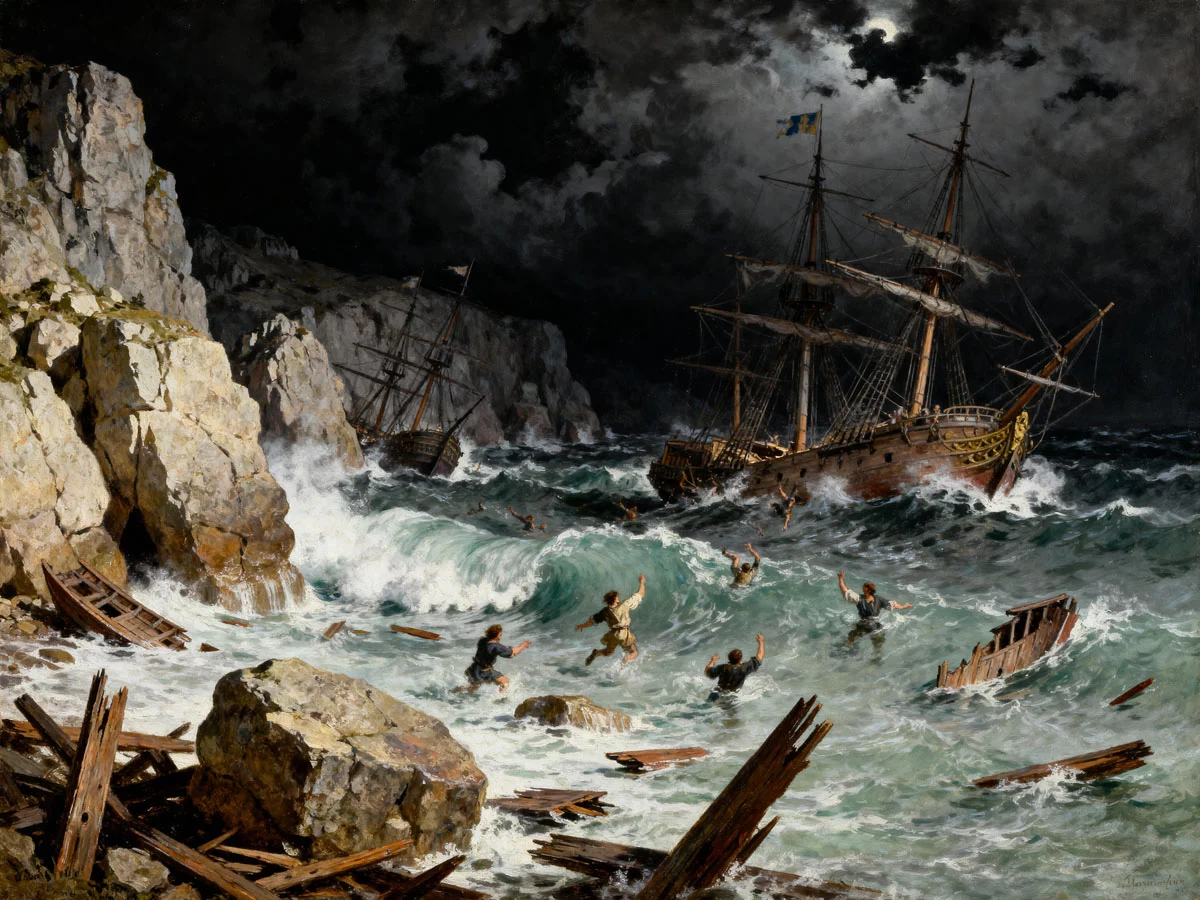
Now, locals say, the drowned fleet has never truly left. On the anniversary of the wrecks, or on nights when a particularly savage storm howls in from the Atlantic, the past rips open. Fishermen caught in the mists report seeing the impossible: the towering, spectral masts of a 16th-century galleon gliding silently through the waves, its crew of ghostly figures still trying to battle the storm that doomed them centuries ago. Some tell of hearing the faint, mournful tolling of a ship's bell from beneath the waves, or the desperate cries of drowning men carried on the wind. The ships are trapped in their final moments, doomed to wreck upon the Clare coast for eternity.
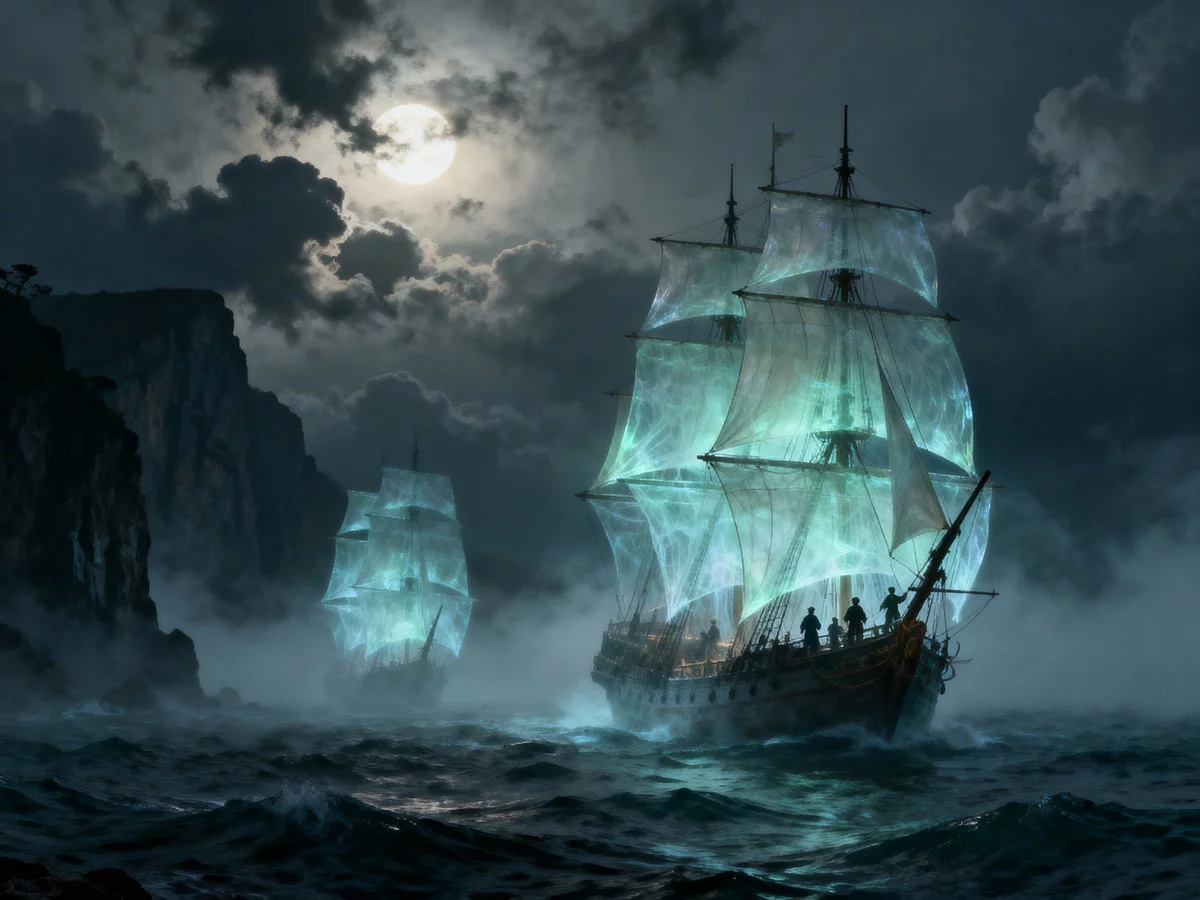
And the legend has another, more tantalizing layer: lost treasure. These were warships, carrying army payrolls, gold ducats, and the personal wealth of Spanish noblemen. The storytellers of Liscannor will tell you that somewhere out there, buried in the sand by a handful of desperate survivors or still locked in the rotting hull of a sunken galleon, lies a fortune in Spanish gold. The phantom ships, they say, are not just re-enacting their demise; they are guarding their lost treasure from all who would seek it.
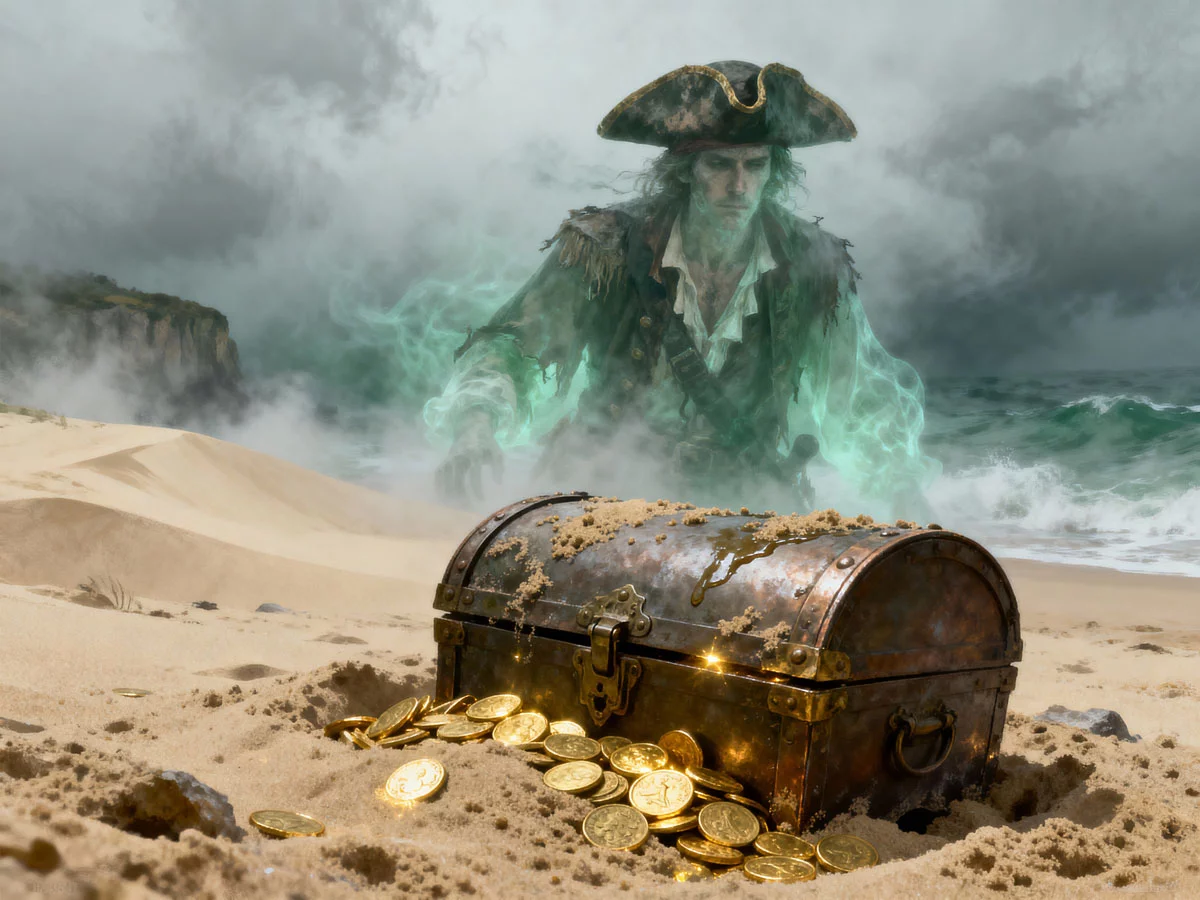
Analysis: From History to Haunting
This legend is a perfect case study in how folklore processes and preserves a major historical trauma.
History as the Seed of Legend: Unlike a purely mythological tale, this story is anchored in a verifiable, cataclysmic event. The wrecking of the Armada ships was real and had a profound impact on the local population. The ghost story becomes a vehicle for cultural memory, ensuring that this pivotal moment in the area’s history is never forgotten. The supernatural elements make the story more memorable and compelling, allowing it to be passed down through generations long after the dry facts have been forgotten.
The Ghost Ship Archetype: The story fits into the powerful, universal maritime archetype of the ghost ship, most famously embodied by the Flying Dutchman. These phantom vessels are nearly always tied to a tragedy at sea, representing an unresolved trauma. The souls of the sailors are not at peace, and their ships are caught in a supernatural loop, forever sailing but never reaching their destination. The Armada ghosts are a local Irish variant of this global myth.
The Allure of Lost Treasure: The addition of the lost gold is a masterful stroke of folklore. It transforms a grim ghost story into a romantic adventure. The treasure provides a motive and a sense of mystery. It keeps the legend active in the community’s imagination, not just as a spooky tale to be told on a stormy night, but as a tantalizing possibility, a secret that the landscape still holds.
The Landscape as Antagonist: The story powerfully characterizes the local environment. The sea, the cliffs, and the weather are not passive backdrops; they are the primary antagonists that destroyed the fleet. The recurring ghosts serve as a constant reminder of the immense and unforgiving power of the Atlantic Ocean, reinforcing a deep-seated local respect for, and fear of, the sea. The ghosts are a warning written on the water itself.
Related Heritage Sites
More Folklore
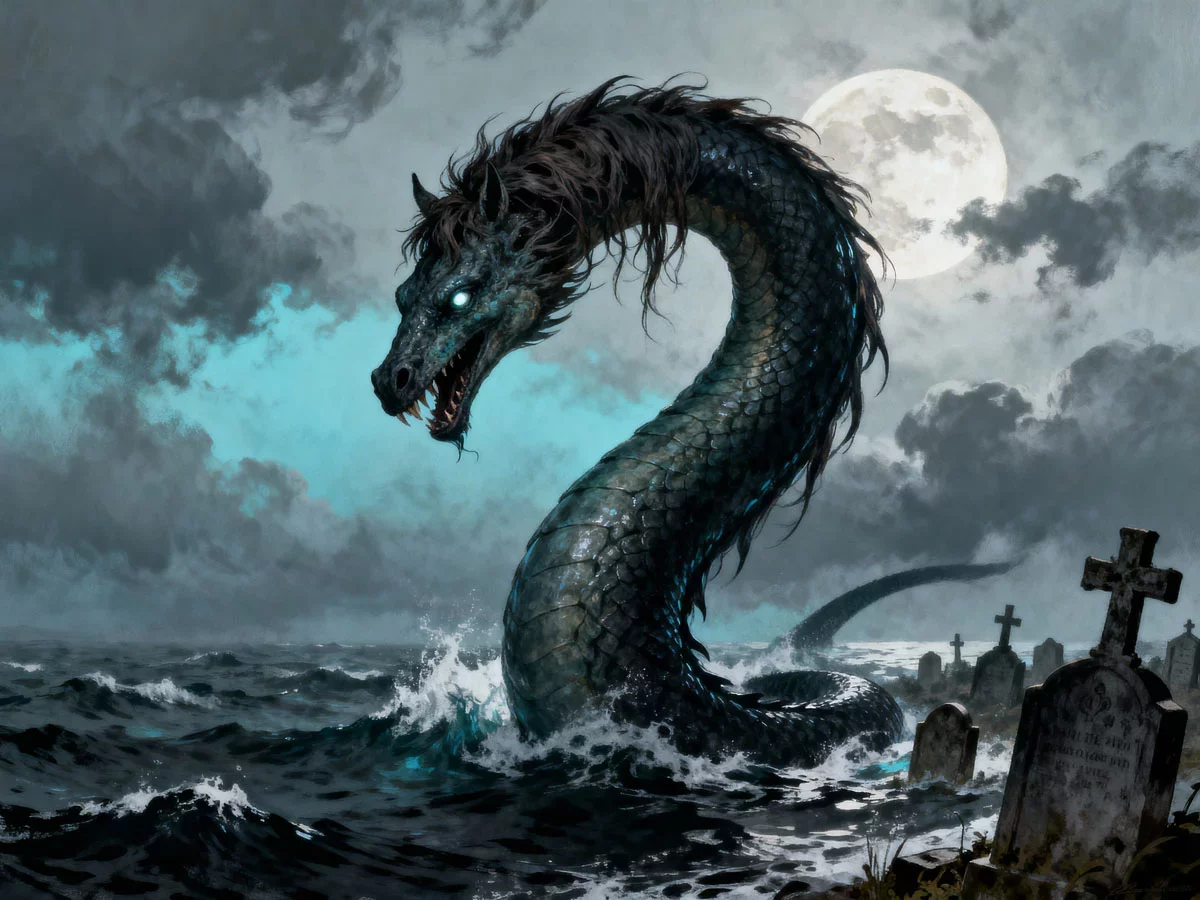
St Macreehy & the Grave-Eel
Local saint Mac Creiche subdued a gigantic corpse-eating sea-eel at Kilmacreehy graveyard and banished it to the Atlantic, proving the power of faith over primal darkness.

The Leap of the Foals (Aill na Searrach)
A group of the Tuatha Dé Danann, the old gods of Ireland, transformed into horses to hide from Christianity in a sea cave. After centuries, seven foals born in the dark emerged, were blinded by the sun, and tragically galloped off the cliff to their deaths.